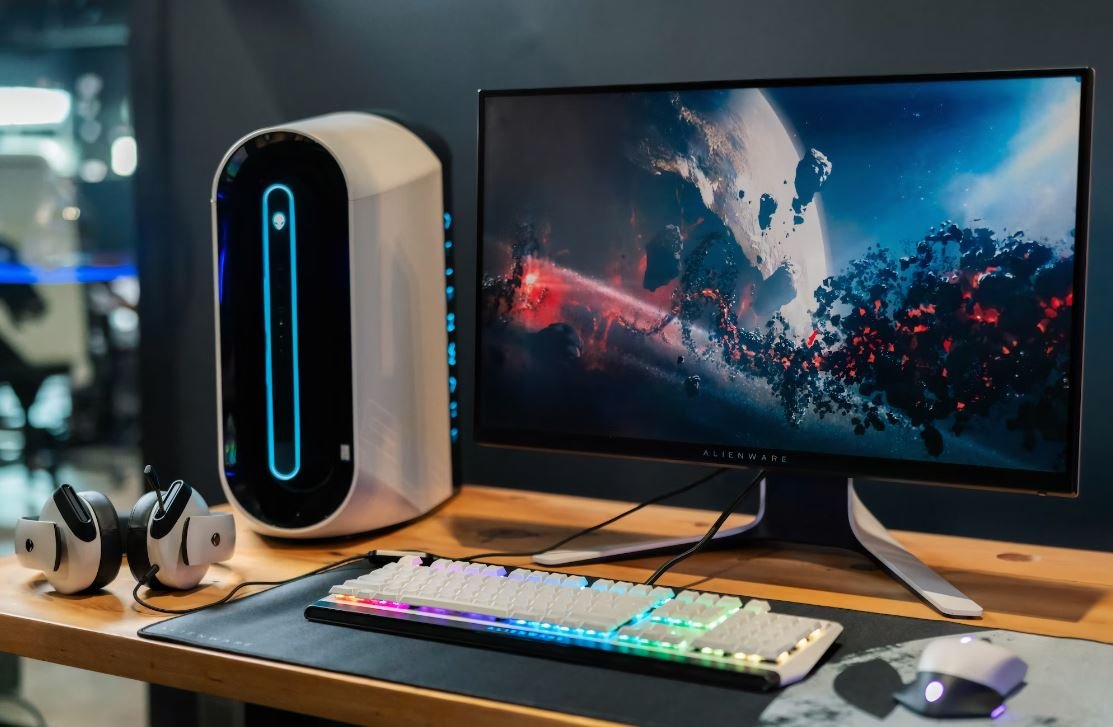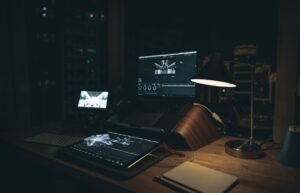Songs Without Instruments
In the world of music, instruments are typically the backbone of any song. However, there are certain genres and techniques that rely solely on the human voice or electronic sounds to create captivating melodies. In this article, we will explore the concept of songs without instruments, discussing different styles, notable artists, and the creative process behind these unique compositions.
Key Takeaways:
- Songs without instruments use only the human voice or electronic sounds to create music.
- Acappella, beatboxing, and vocal looping are common techniques used in songs without instruments.
- Notable artists in this genre include Bobby McFerrin, Pentatonix, and Imogen Heap.
- The creative process often involves experimenting with vocal techniques, layering, and utilizing technology.
The Fascinating World of Songs Without Instruments
In a world where musical instruments dominate, a subset of artists and musicians harness the power of the human voice or electronic sounds to produce songs that captivate listeners. These songs without instruments challenge the traditional notion of music, pushing the boundaries of creativity and showcasing the versatility of the human voice. *Exploring a variety of techniques and genres*, these unique compositions offer a fresh perspective on what it means to create music.
Acapella, beatboxing, and vocal looping are some of the most common techniques used in songs without instruments. **Acapella**, characterized by vocal harmonies and imitating instruments, is often performed by vocal groups who create complex melodies and harmonies using only their voices. **Beatboxing**, on the other hand, involves creating music and rhythm solely with the mouth, mimicking drum beats and other musical sounds. Artists like Bobby McFerrin have mastered the art of beatboxing, showcasing the incredible range of sounds that can be produced using the human voice. Another technique, **vocal looping**, allows artists to create layered arrangements by recording and replaying sections of their own vocals in real-time, building complex compositions right in front of the audience.
Throughout history, numerous artists have ventured into the genre of songs without instruments, leaving their mark on the music industry. One such artist is Bobby McFerrin, who gained international fame with his 1988 hit “Don’t Worry, Be Happy”. McFerrin’s ability to use his voice as an instrument, combining scat singing, vocal percussion, and improvisation, earned him critical acclaim and a Grammy Award. Another notable group in this genre is **Pentatonix**, an a cappella quintet known for their covers of popular songs and creative vocal arrangements. Their impressive vocal harmonies and beatboxing skills have earned them multiple Grammy Awards and a massive following worldwide. *Imogen Heap*, a singer-songwriter and music producer, has also made significant contributions to the genre of songs without instruments through her innovative use of electronic sounds and vocal manipulation.
The Creative Process Behind Songs Without Instruments
Creating songs without instruments involves a unique and experimental approach to music production. Artists in this genre often begin by *exploring different vocal techniques*, experimenting with the range and versatility of their voices. They practice and refine skills such as vocal percussion, harmonizing, and manipulating their voices to imitate various instruments. *Layering* plays a crucial role in building complex arrangements, allowing artists to create a full-bodied sound by recording multiple vocal parts and harmonies. Technology also plays a significant role in the creative process, with artists utilizing looping pedals, effects processors, and software to enhance their vocal capabilities and create intricate compositions.
Below are three tables showcasing interesting information and data points related to songs without instruments:
| Notable Artists | Genre | Awards |
|---|---|---|
| Bobby McFerrin | Acapella, Jazz, Experimental | Grammy Award |
| Pentatonix | Acapella, Pop | Multiple Grammy Awards |
| Imogen Heap | Electronica, Experimental | Grammy Award |
| Common Techniques | Description |
|---|---|
| Acapella | Vocal harmonies imitating instruments. |
| Beatboxing | Creating music and rhythm using mouth sounds. |
| Vocal Looping | Recording and replaying vocals in real-time to build layered arrangements. |
| Technological Tools | Description |
|---|---|
| Looping Pedals | Hardware devices that allow artists to loop and layer vocal recordings on-the-fly. |
| Effects Processors | Devices or software that alter vocal sounds with various effects. |
| Vocal Manipulation Software | Software tools used to manipulate vocal recordings and create unique sounds. |
Songs without instruments continue to captivate audiences and push the boundaries of what is considered traditional music. The agility of the human voice and the advancements in audio technology have paved the way for exciting and innovative compositions. Artists in this genre push themselves creatively, constantly exploring new vocal techniques and experimenting with technology. Through their groundbreaking work, they remind us that music can truly be created with *just a voice*.

Common Misconceptions
1. Songs without instruments are not real music
Many people believe that a song without instruments is not considered real music, but this is far from the truth. While traditional music often relies on instruments like guitars, pianos, or drums, songs without instruments are just as valid and can evoke powerful emotions.
- Songs without instruments can still have melodies and harmonies.
- They can rely on vocals or vocal samples to create a captivating sound.
- Some genres, such as acapella or electronic music, heavily feature songs without instruments.
2. Songs without instruments lack complexity
Another misconception is that songs without instruments are simpler and lack the complexity found in instrument-based music. In reality, composing a song without instruments can require great skill and creativity.
- Songs without instruments can use intricate vocal layering and harmonies.
- They can incorporate complex rhythms and beatboxing techniques.
- Many artists use digital tools and software to manipulate sounds and create complex arrangements without instruments.
3. Songs without instruments are only for a niche audience
Some people assume that songs without instruments are only meant for a small, niche audience. However, there are numerous popular songs and artists who have gained mainstream success without relying on traditional instruments.
- Artists like Bobby McFerrin and Pentatonix have attracted a wide fan base with their acapella performances.
- Songs without instruments often capture the attention of music enthusiasts who appreciate unique vocal techniques and experimental sounds.
- Genres like EDM and electronic music have gone mainstream, relying heavily on songs without traditional instruments.
4. Songs without instruments lack versatility
Another misconception is that songs without instruments are limited in terms of genre and style. However, the absence of instruments opens up a unique realm of musical possibilities and allows for versatility in artistic expression.
- Songs without instruments can span genres like pop, rock, jazz, and even classical music.
- Artists who perform songs without instruments often experiment with different vocal techniques and styles.
- These songs can be expressive and adapt to a variety of moods and themes.
5. Songs without instruments are easier to make
Lastly, some people believe that songs without instruments are easier to create compared to instrument-based music. However, composing and producing songs without instruments can still be a challenging and time-consuming process.
- Artists have to carefully consider vocal arrangements, harmonies, and the overall sound design.
- Production techniques and technical skills are crucial in achieving a quality mix and sound.
- Experimenting with different effects and manipulating vocal recordings can demand extensive creativity and expertise.

Songs Without Instruments: A Unique Musical Experience
Imagine a world where music is created without the use of traditional instruments. This article explores the fascinating realm of songs created solely using the human voice, body percussion, and unconventional objects as instruments. Through ten examples, we delve into the diverse and extraordinary ways in which artists have pushed the boundaries of musical expression.
Vocal Harmonies in Perfect Sync
Experience the enchanting beauty of intricate vocal harmonies as performers seamlessly blend their voices to create mesmerizing melodies. Witness the magic of acapella music in action.
| Artistic Group | Song Title | Vocal Range |
|—————|————|————–|
| Pentatonix | “Hallelujah” | Soprano, Alto, Tenor, Baritone, Bass |
| The Swingle Singers | “Flight of the Bumblebee” | Soprano, Alto, Tenor, Baritone, Bass |
Body Percussion: A Rhythmical Extravaganza
Unleash rhythm using nothing but the art of body percussion. From clapping hands to stomping feet, witness the sheer power and creativity that can be achieved with this unique form of musical expression.
| Performer | Song Title | Body Percussion Used |
|———–|————|———————|
| Keith Terry | “Slam” | Handclaps, Chest Thumps, Foot Stomping |
| Ryan Oakes | “Sharp” | Handclaps, Snaps, Foot Taps, Vocal Percussion |
Beatboxing: Creating Music with the Voice
Enter the fascinating world of beatboxing, where artists use their vocal cords and mouths to mimic drum sounds, rhythms, and create incredible musical compositions.
| Artist | Song Title | Vocal Effects |
|——–|————|—————|
| Tom Thum | “I Need a Dollar” | Drum Beats, Bass Lines, Sound Effects |
| Kaila Mullady | “Champion” | Beatboxing, Vocal Scratching, Looping |
Object-Based Music: Innovative Soundscapes
Discover songs where ordinary objects are turned into extraordinary musical instruments, demonstrating the innovative and imaginative nature of musicians.
| Artist | Song Title | Object Used |
|——–|————|————-|
| Diego Stocco | “Music from a Dry Cleaner” | Dry Cleaner Items |
| Wintergatan | “Marble Machine” | Marbles, Wood, Metal |
Vocal Looping: Building Layers of Sound
Witness artists create intricate compositions by layering various vocal loops, allowing them to become one-person bands with the ability to perform complex musical arrangements.
| Artist | Song Title | Vocal Loops |
|——–|————|————-|
| Jacob Collier | “Hideaway” | Beatboxing, Harmonies, Vocal Percussion |
| Dub FX | “Love Someone” | Beatboxing, Melodies, Harmonies |
Musical Storytelling Through Mouth Sounds
Experience songs that tell stories without the use of words, employing mouth sounds and vocalizations to capture listeners’ imagination and evoke emotions.
| Artist | Song Title | Mouth Sounds |
|——–|————|————–|
| Bobby McFerrin | “Opus No. 1” | Scat Singing, Vocalizations |
| Reggie Watts | “If You’re F*cking, You’re F*cking” | Beatboxing, Sound Effects |
Whistling: Melodies Carried by Air
Embark on a journey with melodies sung through whistling, showcasing how this simple technique can create captivating tunes and unforgettable musical experiences.
| Artist | Song Title | Whistling Style |
|——–|————|—————-|
| Ennio Morricone | “The Good, the Bad, and the Ugly” | Western-style Whistling |
| Andrew Bird | “Fake Palindromes” | Jazz-inspired Whistling |
Vocal Onomatopoeia: Beyond Words
Discover songs where vocal sounds depict non-vocal phenomena, creating a world of auditory illusions that captivate listeners.
| Artist | Song Title | Onomatopoeia |
|——–|————|————–|
| Lionel Hampton | “Hey-Ba-Ba-Re-Bop” | Trumpet and Saxophone Sounds |
| Imogen Heap | “Goodnight and Go” | Electronica-inspired Vocal Effects |
Human Orchestra: Expanding Vocal Capabilities
Witness breathtaking performances where artists push the limits of their vocal capabilities to imitate various instruments and create extraordinary symphonies.
| Artist | Song Title | Imitated Instruments |
|——–|————|———————|
| Bobby McFerrin | “Blackbird” | Flute, Trumpet, Bass |
| Andreas Schaerer | “The Big Wig” | Saxophone, Drum Kit, Guitar |
Conclusion
The world of songs without instruments offers a unique musical experience where artists explore the vast potential of the human voice and unconventional objects. Through vocal harmonies, body percussion, beatboxing, object-based music, vocal looping, and other creative techniques, these musicians break the boundaries of traditional instrumentation and provide us with extraordinary audiovisual performances. From synchrony to innovation, the tables above illustrate the diversity and ingenuity of this remarkable genre. So, immerse yourself in the enchanting world of songs without instruments and discover the endless possibilities of musical expression.
Frequently Asked Questions
What is meant by “songs without instruments”?
Songs without instruments refer to musical compositions that are created and performed using only vocals or non-instrumental sounds. These songs rely on the human voice and other natural sounds to convey and express the music.
Can songs without instruments still be considered music?
Yes, songs without instruments are still considered music. While they may lack traditional musical instruments, they utilize vocals or other sounds to create rhythm, melody, and harmony. These songs often showcase the power of human voice or creative manipulation of non-instrumental sounds.
What are some examples of songs without instruments?
Some examples of songs without instruments include a cappella performances, beatboxing, spoken word poetry, vocal sampling, and songs utilizing only natural sounds. Artists like Bobby McFerrin, Pentatonix, and Björk have experimented with songs that do not feature traditional instruments.
What techniques are used to create songs without instruments?
Creating songs without instruments involves various techniques. Vocal harmonies, beatboxing, vocal percussion, vocal layering, and vocal effects are some common techniques employed to produce intricate and dynamic musical compositions. Additionally, the use of non-instrumental sounds, such as clapping, tapping, or even environmental noises, can be integrated into these songs.
Are there any famous songs that feature no instruments?
Yes, several famous songs have been created without the use of traditional instruments. Examples include “Don’t Worry, Be Happy” by Bobby McFerrin, “Scatman (Ski-Ba-Bop-Ba-Dop-Bop)” by Scatman John, and “Hyperballad” by Björk. These songs highlight the creativity and versatility of artists in utilizing vocals and non-instrumental sounds to create impactful music.
What are the benefits of songs without instruments?
Several benefits come with songs without instruments. They provide a unique and captivating listening experience, showcasing the range and versatility of the human voice as a musical instrument. These songs often offer innovative and experimental approaches to music production, breaking traditional boundaries and allowing for creative expression.
Can songs without instruments be as complex as those with instruments?
Absolutely. Songs without instruments can be just as complex as those with instruments. Through a combination of vocal techniques, vocal layering, harmonies, and creative use of non-instrumental sounds, artists can create intricate and multi-dimensional compositions that rival the complexity of traditional instrument-based songs.
Are songs without instruments a recent phenomenon?
No, songs without instruments have been present throughout history. While they may have gained more recognition in recent years, particularly with the rise of a cappella groups and vocal-focused artists, the use of vocal-only or non-instrumental sounds in music can be traced back to traditional cultural practices and various vocal traditions worldwide.
Can songs without instruments be performed live?
Absolutely. Songs without instruments can be performed live. In fact, many artists who specialize in vocal or non-instrumental music often emphasize their live performances. They showcase their vocal skills and engage in real-time improvisation to bring their songs to life, captivating audiences with their talent and creativity.
How can one get started in creating songs without instruments?
To get started in creating songs without instruments, one can begin by exploring various vocal techniques and experimenting with their voice. Learning about beatboxing, vocal harmonies, and vocal effects can be a great starting point. Additionally, exploring different genres and artists who specialize in songs without instruments can provide inspiration and ideas for one’s own creative process.




